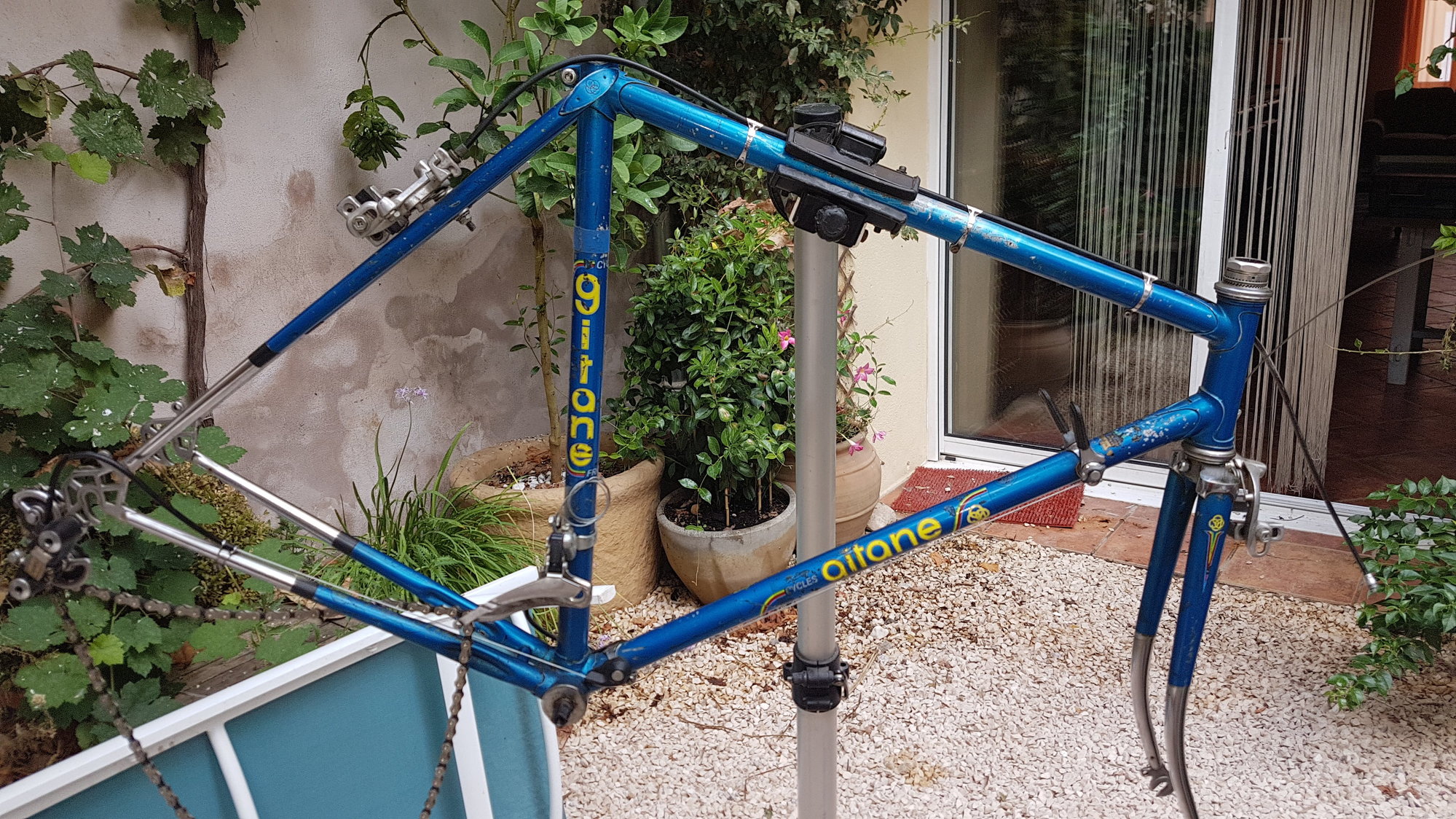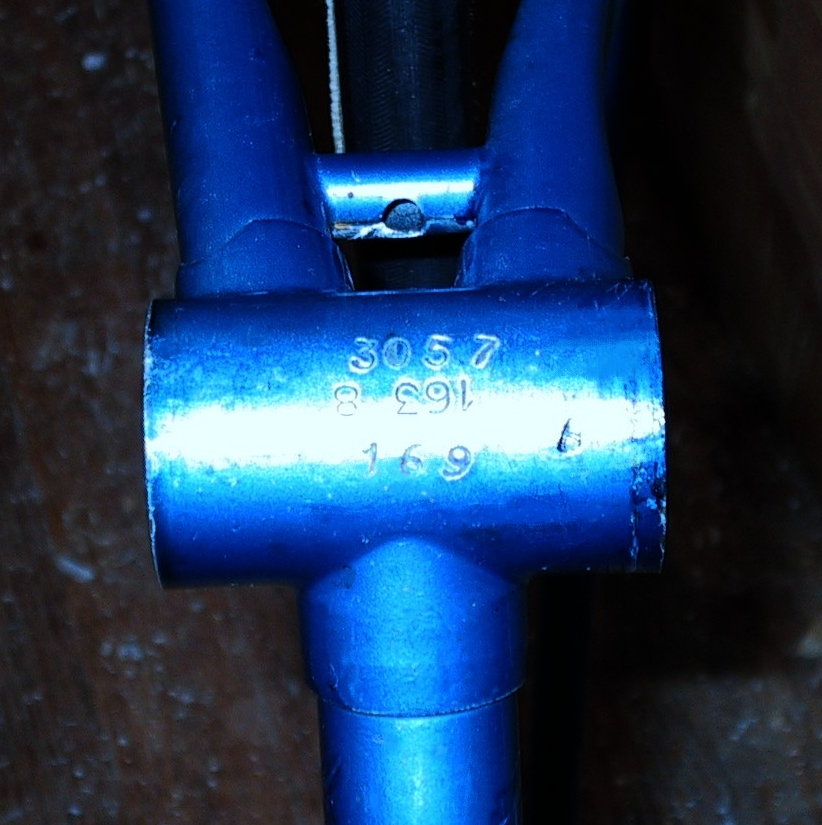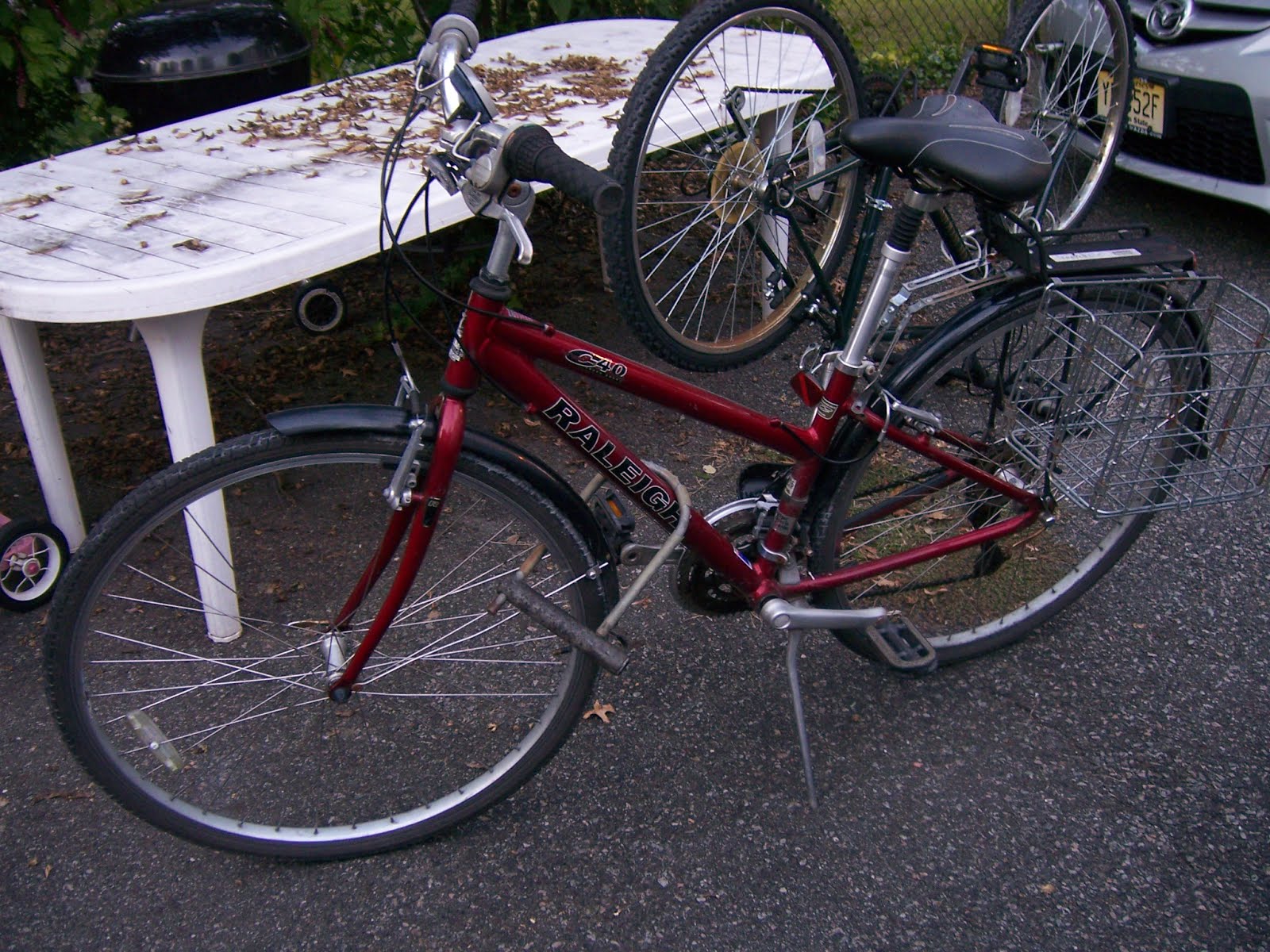- The majority of bike serial numbers can be found in the following locations on your bike. The photo below has arrows that are pointing to each potential serial number location. Flip your bike upside down and the serial number is under the bottom bracket.
- Little is known of Gitane models which pre-date the late 1960’s. There are few, if any, specimens in existence in the USA, and more information is welcome regarding the bikes.
- I have a Giant OCR-C road bike which I purchased from the bike shop owner in 2007. I think it is a 2006 model. The serial number is GA6B054 but I can not find any place to look up these bikes on line by serial number. I am selling the bike and someone asked me which make it is. I don't know what to tell them.
There is no universal registration of bike serial numbers. Even the number stamped on the frame doesn't necessarily mean much. Your best bet is to figure out the manufacture of the frame, and see if they have a lookup for it. However, all of this is generally irrelevant, as who originally made a bike doesn't have any real bearing on its.
Gitane Models
Little is known by the author of any Gitane models which pre-date the late 1960’s. There are few, if any, specimens in existence in the USA, and more information would be welcome regarding the bikes of the 1940’s, 50’s and early 60’s.
However, starting in the late 1960’s, Gitane began exporting large quantities of lightweight “racing” bicycles to the USA. Of particular note were the two high-end models, the “Tour de France”, a mid-level racing bicycle similar to Peugeot’s PX-10, and the “Super Corsa”, which ranked with many high end custom bicycles, but lacked the attention to detail and nice finish of the Italian racers. Below are some of the more popular models of Gitane in the 1970’s and 1980’s, with an emphasis on racing.
Gitane Tour de France – 1970s
What makes French bikes so difficult and “untidy”, for lack of a better word, is the fact that they were often sold with parts other than what was listed in the catalogs. It seemed that the company would build bicycles with whatever parts were on hand. That said, Gitane’s most popular racing model of the early 1970’s was the affordable but sometimes less than perfect Tour de France.
Made of Reynolds 531 tubing, Prugnat lugs, Vagner Fork Crowns, and Simplex dropouts, the workmanship was often sloppy. Although not pretty to look at, it was not necessarily poorly made, just poorly finished. Lugs are often off-center, welding on the dropouts looks to have been done by a three-year old. And the paint jobs were not the best. The paint itself was not clear coated, and the gold detail around the lugs was hand-applied by less than steady hands. The logos and other artwork were merely stuck on with stickers, instead of using decals with clear coat over them. It is for this reason that it is difficult to find older Gitane’s in pristine condition. Often, bottle cages and other clamp-ons were placed over the stickers and would mar them, forcing the owners to remove them entirely if they wanted the bicycle to look somewhat presentable.
But perhaps it is these imperfections that make the Tour de France a desirable bicycle. Selling for around $200 in 1970, these bikes were many people’s first “high performance” machines. They were outfitted with Simplex derailleurs, which worked reasonably well when new, the beautiful (if heavy looking) Stronglight crank set, Normandy hubs, Pivo stem, and Mafac Competition brakes, and Ideale leather saddle. Of course, these used the French threading that we are all so fond of.
The Tour de France name lived on in Gitane bicycles until around 1979. More information is requested regarding the late 1970’s models of high-end Gitanes.
Tour de France – Specifications (as listed in catalog):
Frame Sizes: 19.5, 21.5, 22.5, 23.5, 24.5, 25.5 (inches)
Frame: Reynolds 531 double butted
Lugs: Prugnat
Fork: Reynolds 531
Dropouts: Simplex
Bar/Stem: Pivo Professional
Brakes: Mafac Racer Luxe
Crankset: Stronglight Super Competition 93 52/42
Freewheel: 14/17/20/23/26
Pedals: Lyotard 460 Dural
Rims: Dural Mavic Monthlery
Hubs: Normandy Luxe Competition (Campagnolo Optional)
Tires: Dunlop Tubular
Seat Post: Simplex 26.4 (This varied a lot, so measure before you buy!)
Derailleurs: Simplex Criterium
Headset: Stronglight
Weight: 21.5 lbs.
Extras: Toeclips/straps, chrome rear stays, fork tips, & crown
Gitane Super Corsa – 1970s
Similar in many respects to the Tour de France, the Super Corsa was Gitane’s top-of-the-line offering in the late 1960’s and early 1970’s. Reynolds 531 tubing throughout, Prugnat lugs and Vagner Fork Crowns, it differed from the TdF in one respect: It was outfitted with Campagnolo Nuovo Record components, instead of the French assortment used on the TdF. The component packages could vary though, and it was not uncommon to find Stronglight parts on a Super Corsa. Of course, these to were French threaded.
Identifying a Super Corsa frame is done by examining the dropouts, which were Campagnolo instead of Simplex, as used on the TdF. Generally, the welds near the dropouts and the finish work was slightly better and “cleaner” on the Super Corsa. Another factor in differentiating between the two was the shape of the fork crown, which differed in design. While the TdF used a shorter, more curved Vagner fork crown, the Super Corsa was outfitted with a design which featured a long “spike” down the center. In some models, the “spike” was missing altogether. All fork crowns were chromed, with a bottom third chromed fork and partially chromed chain/seat stays on both the TdF and Super Corsa.
Unfortunately, the sticker system used on all Gitanes at the time was also employed on the Super Corsa. Even worse, is that some used stickers meant for the TdF frames and thus mislead owners as to the true identity of their framesets. For example, on the right fork blade of the TdF, Gitane applies a yellow and blue sticker in the shape of France, saying “Tour de France” on it. These stickers showed up on both Super Corsa and TdF frames, even though catalogs show that the Super Corsa should not have displayed that sticker. Also, head tubes, which in catalogs were shown to be completely silver on the Super Corsa, often were not, thus further confusing owners years later as to the true identity of their frames.
Super Corsa – Specifications (as listed in catalog):
Frame Sizes: 19.5, 21.5, 22.5, 23.5, 24.5, 25.5 (inches)
Frame: Reynolds 531 double butted
Lugs: Prugnat
Fork: Reynolds 531
Giant Bikes Serial Number
Dropouts: Campagnolo
Bar/Stem: Pivo Professional
Gitane Road Bikes
Brakes: Mafac Racer Luxe (Campagnolo Optional)
Crankset: Campagnolo (Nuovo Record) 42/52
Freewheel: 14/17/20/23/26
Pedals: Campagnolo
Rims: Dural Mavic Monthlery

Hubs: Campagnolo Record quick release
Tires: Dunlop Tubular
Seat Post: Campagnolo 26.4 (Nuovo Record – varied a lot, so measure first!)
Derailleurs: Campagnolo Nuovo Record
Headset: Campagnolo (Nuovo Record)
Weight: 22 lbs.
Extras: Toeclips/straps, chrome rear stays, fork tips, & crown

Gitane Gran Tourisme – 1970’s
The Gran Tourisme was Gitane’s offering for the serious touring cyclist in the early 1970s. It came stock with racks, fenders and lights. Interestingly enough, pictures from the catalog showed that it came without any decals of any sort, except for the headtube Gitane logo, “handmade” sticker, and Reynolds 531 transfer. The Gran Tourisme is indeed a rare bicycle.
Gran Tourisme – Specifications (as listed in catalog):
Frame Sizes: 21.5, 22.5, 23.5, 24.5, 25.5 (inches)
Frame: Reynolds 531 double butted
Lugs: Prugnat
Fork: Reynolds 531
Dropouts: Campagnolo
Bar/Stem: Pivo Professional/Pivo Dural Randonneur
Brakes: Mafac Racer Luxe
Crankset: Campagnolo (Nuovo Record) 36/46/52
Freewheel: 14-31
Pedals: Campagnolo (Nuovo Record)
Rims: Dural Mavic Clincher 27x1 1/4
Hubs: Campagnolo Record quick release
Tires: Michelin 50
Seat Post: Campagnolo 26.4 (Nuovo Record)
Derailleurs: Campagnolo Gran Turismo
Headset: Campagnolo
Weight: 25 lbs.
Extras: Front/rear racks, chrome rear stays, fork tips/crown, toe clips/straps, head/tail light, pump, kickstand
Gitane Interclub & Gran Sport DeLuxe – 1970s
The Interclub and Gran Sport DeLuxe were the bottom level Gitanes offered during the early 1970s, and don’t warrant much space here or in your collection. They do, however, make for great “city bike” converts. Stamped steel dropouts and “chromoly” tubing, they came with extremely heavy Stronglight steel cranksets and usually with Simplex derailleurs and Mafac Racer brakes. With a similar look to the Super Corsa and TdF, they can still look good, even if they weren’t the fastest bikes on the road!
Interclub – Specifications (as listed in catalog):
Frame Sizes: 19.5, 21.5, 22.5, 23.5, 24.5, 25.5 (inches)
Frame: Seamless lightweight steel
Lugs: Bocama
Fork: Chrome tips and crown
Dropouts:
Where Are The Serial Numbers On A Gitane Bike Kickstand
Bar/Stem: Pivo Dural/Pivo Professional

Brakes: Mafac Racer Luxe
Crankset: Durax 36/52 (40/52 Optional)
Freewheel: 14-26 or 14-28
Pedals: Lyotard 36
Rims: Dural Mavic Sport
Hubs: Normandy Sport quick release
Tires: Dunlop Tubular
Seat Post: Steel
Derailleurs: Simplex Prestige (Huret optional)
Headset: Bardon
Weight: 24.5 lbs.
Extras: Toeclips/straps, Zefal pump
Gitane Replica – 1983/84
Billed as the same bike used by the Renault-Gitane Team in 1983, this classic cycle was outfitted with Columbus Tubing, a departure for Gitane which lasted only a couple of years, before a return to Reynolds.
Finished in a beautiful metallic blue, the frames featured internally-routed rear brake cables, a braze-on for the front derailleur, and the ultra-sporty and very cool number plate peg under the top tube. They were outfitted with Mavic brakes, Stronglight cranks, Simplex derailleurs and Cinelli bars. In 1984, the bikes were outfitted with Campagnolo Super Record.
One disturbing story about these frames center around the Simplex dropouts on the drive-side stays. It is held by some that these had a high rate of failure on the bikes. One story is that a team which was outfitted in the USA with these bikes broke every one of them – and all in the same place. It may be for this reason that Gitane switched to Vitus dropouts on later frames (or perhaps another reason?)
Gitane Replica – 1984/85
Similar in many respects to the model years prior, the 1984/85 “Team Replica” was painted in the metallic blue of the years prior, but used Reynolds 531 Professional tubing and later came with 531c tubing. They also had internally routed rear brake cables and the number pegs, sporty extras which added to the class of the bicycle. Also features was a “hidden” seat post bolt, which used a fixed screw system which was tucked neatly behind the seat tube.
These bicycles came with Vitus dropouts and came with both painted and chromed forks, depending on the year. The chain stays were chromed as well. Interestingly enough, these bicycles used standard English threading, departing from the difficult to find and hard to work with French threading of the 1970’s models.